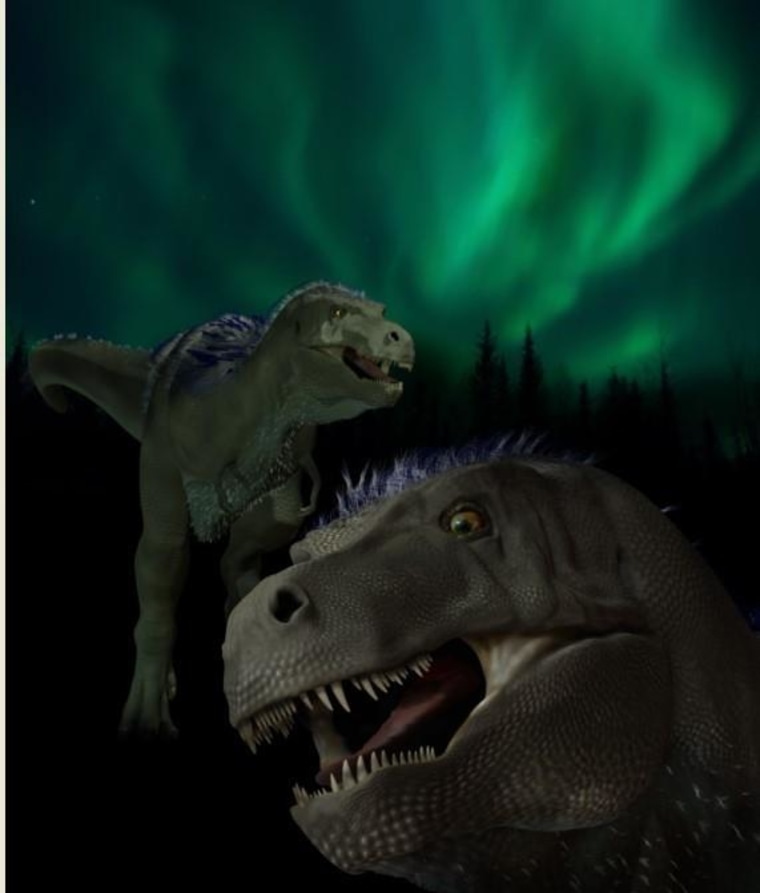A miniature cousin of Tyrannosaurus rex once roamed the Arctic, a new fossil discovery reveals.
The new tyrannosaur (Nanuqsaurus hoglundi) had a skull length of between 23 and 27 inches (60 to 70 centimeters) when full-grown. In comparison, an adult T. rex boasted a skull about 60 inches (150 cm) long — that's a whopping 5 feet (1.5 meters).

"The 'pygmy tyrannosaur' alone is really cool because it tells us something about what the environment was like in the ancient Arctic," study researcher Anthony Fiorillo of the Perot Museum of Nature and Science in Dallas, said. "But what makes this discovery even more exciting is that Nanuqsaurus hoglundi also tells us about the biological richness of the ancient polar world during a time when the Earth was very warm compared to today."
Teeny tyrannosaurThe identification of the new species comes from a few skull bone fragments found in 2006 on Alaska's North Slope, at the Kikak-Tegoseak Quarry inland from Prudhoe Bay. Originally, paleontologists thought the bones belonged to another tyrannosaurid dinosaur, Gorgosaurus libratus. But further research showed the fossil to be about 70 million years old, which matched better with the timing and range of a close relative of Gorgosaurus, Albertosaurus sarcophagus.
On closer inspection, the skull fragments didn't match the Albertosaurus, either. In fact, the bones appear to fill evolutionary and geographical gaps between other tyrannosaur species, the researchers reported March 12 in the journal PLOS ONE.
The first word of the scientific name given to the new species means "polar bear lizard," and the second is in honor of earth scientist Forrest Hoglund. The fossil discovery came from northern Alaska, perhaps highlighting the adaptability of this toothy predator. [In Photos: A Near-Complete T. Rex Skeleton]
- Stephanie Pappas, LiveScience
Follow Stephanie Pappas on Twitter and Google+. Follow us @livescience, Facebook & Google+. This is version of a report that appeared on LiveScience. Read the original report.
- Photos: Thousands of Dinosaur Tracks Along Yukon River
- Image Gallery: 25 Amazing Ancient Beasts
- Paleo-Art: Dinosaurs Come to Life in Stunning Illustrations
Copyright 2014 LiveScience, a TechMediaNetwork company. All rights reserved. This material may not be published, broadcast, rewritten or redistributed.